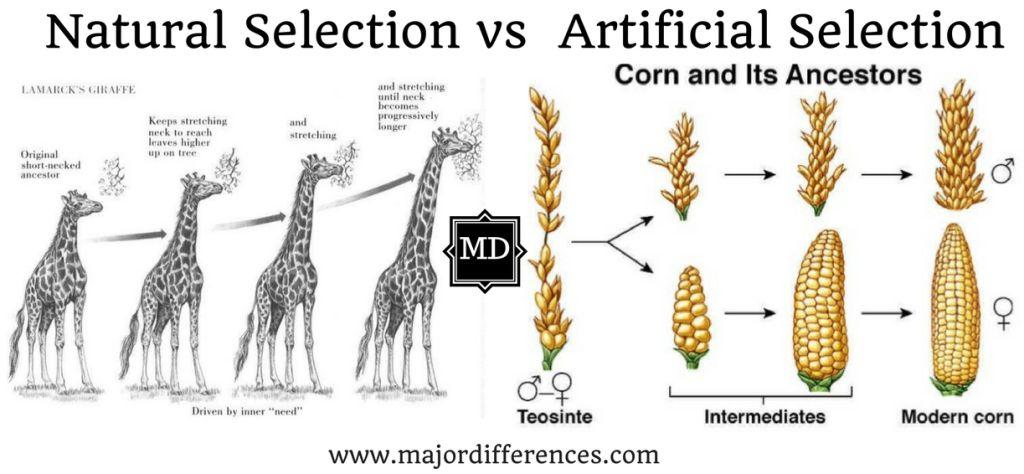Samantha Himegarner
Jillian Holbrook
AP Biology 🧬
358 resourcesSee Units
Mechanisms of Evolution
Natural selection and artificial selection are both mechanisms for evolution since they change the genetic makeup of a population over time.
We learned previously that natural selection is the process by which heritable phenotypic variation leads to differential reproductive success. Natural selection involves selective environmental pressures where certain organisms are better adapted to survive and pass on their genes to offspring. This can lead to shifts in the allele frequencies of a population.
In contrast, artificial selection is a type of selective breeding in order to manipulate the phenotypic frequencies of a population or species. Artificial selection is the process of intentionally breeding organisms for specific traits. Typically, humans choose which individuals will reproduce based on having desirable traits.
Phenotypic Variety
Artificial selection has been used for thousands of years to breed domestic animals and plants with desired traits. For example, farmers may breed cows that produce more milk, or farmers may cultivate crops that are resistant to pests or diseases. In the case of artificial selection, the traits that are selected are determined by humans rather than being the result of the natural environment. Effectively, artificial selection is how humans can manipulate the phenotypic variety of a population.
More than that, artificial selection can also be used to study the genetic basis of traits in organisms. By breeding individuals with specific traits and tracking the inheritance of those traits over multiple generations, scientists can learn about the genes that control those traits. This can help them understand how traits are passed from one generation to the next and how different genes interact to produce different traits! 🧬
Convergent Evolution
Environmental pressure can also play a part in this! Convergent evolution is the process by which unrelated or distantly related organisms evolve similar traits due to similar selective pressures in their environments. This means that even though the organisms are not closely related, they have evolved to look or behave in similar ways because they live in similar environments and face similar challenges. While convergent evolution is not “artificial,” it is caused by a manipulation coming from environmental pressures.
Wings are a great example of convergent evolution. Despite the fact that birds, bats, and insects evolved wings independently and do not share a common ancestor, their wings are all very similar in structure! Birds and bats have thin, flexible wing structures composed of bones and skin that allow them to move through the air dynamically. This similarity in structure is an example of convergent evolution, as it shows how unrelated organisms can evolve similar structural and functional traits due to similar selective pressures in their environments. 🦇

Image Courtesy of Major Differences
Check out the AP Bio Unit 7 Replays or watch the 2021 Unit 7 Cram
Browse Study Guides By Unit
🧪Unit 1 – Chemistry of Life
🧬Unit 2 – Cell Structure & Function
🔋Unit 3 – Cellular Energetics
🦠Unit 4 – Cell Communication & Cell Cycle
👪Unit 5 – Heredity
👻Unit 6 – Gene Expression & Regulation
🦍Unit 7 – Natural Selection
🌲Unit 8 – Ecology
📚Study Tools
🧐Exam Skills

Fiveable
Resources
© 2025 Fiveable Inc. All rights reserved.